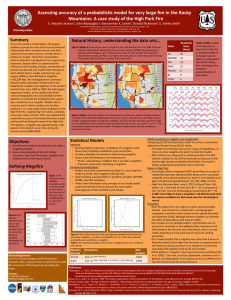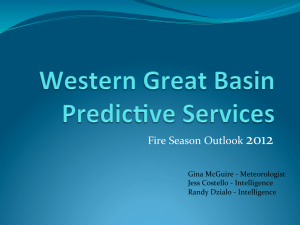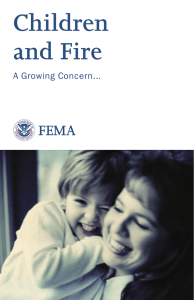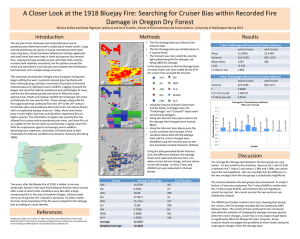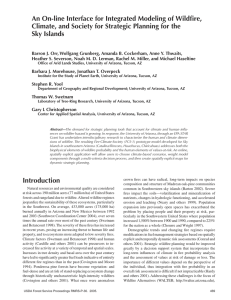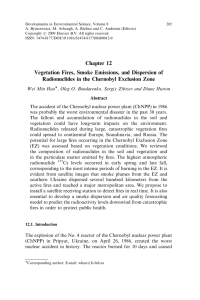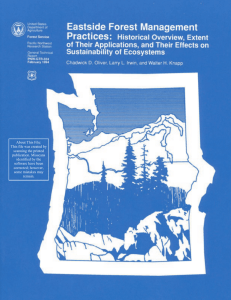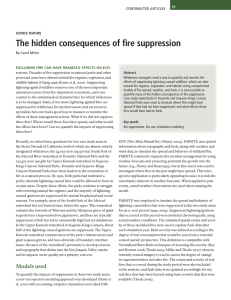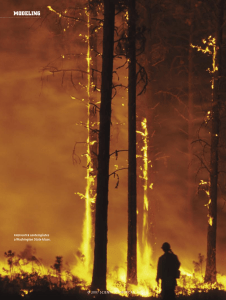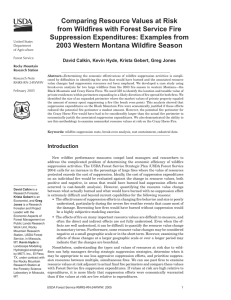Fire Wildland Fires
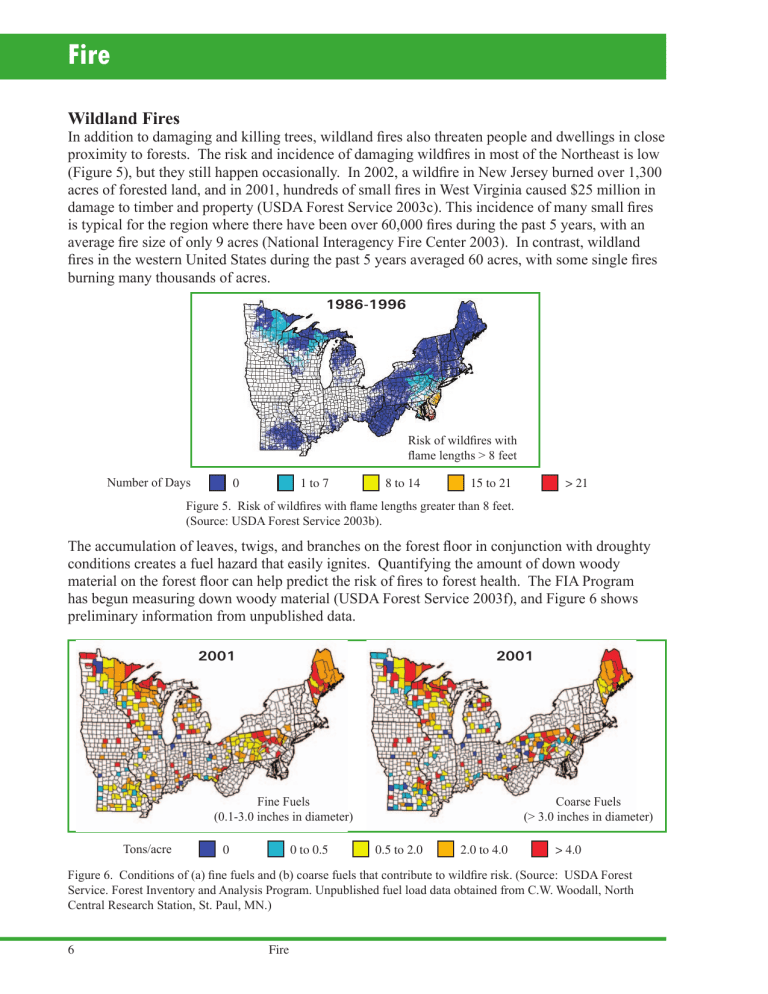
Fire
Wildland Fires
In addition to damaging and killing trees, wildland fires also threaten people and dwellings in close proximity to forests. The risk and incidence of damaging wildfires in most of the Northeast is low
(Figure 5), but they still happen occasionally. In 2002, a wildfire in New Jersey burned over 1,300 acres of forested land, and in 2001, hundreds of small fires in West Virginia caused $25 million in damage to timber and property (USDA Forest Service 2003c). This incidence of many small fires is typical for the region where there have been over 60,000 fires during the past 5 years, with an average fire size of only 9 acres (National Interagency Fire Center 2003). In contrast, wildland fires in the western United States during the past 5 years averaged 60 acres, with some single fires burning many thousands of acres.
1986-1996
Risk of wildfires with flame lengths > 8 feet
Number of Days 0 1 to 7 8 to 14 15 to 21
Figure 5. Risk of wildfires with flame lengths greater than 8 feet.
(Source: USDA Forest Service 2003b).
> 21
The accumulation of leaves, twigs, and branches on the forest floor in conjunction with droughty conditions creates a fuel hazard that easily ignites. Quantifying the amount of down woody material on the forest floor can help predict the risk of fires to forest health. The FIA Program has begun measuring down woody material (USDA Forest Service 2003f), and Figure 6 shows preliminary information from unpublished data.
2001 2001
Fine Fuels
(0.1-3.0 inches in diameter)
Coarse Fuels
(> 3.0 inches in diameter)
Tons/acre 0 0 to 0.5
0.5 to 2.0
2.0 to 4.0
> 4.0
Figure 6. Conditions of (a) fine fuels and (b) coarse fuels that contribute to wildfire risk. (Source: USDA Forest
Service. Forest Inventory and Analysis Program. Unpublished fuel load data obtained from C.W. Woodall, North
Central Research Station, St. Paul, MN.)
6 Fire
Prescribed Fire
Ironically, the lack of fire in forest ecosystems in the Northeast is probably more detrimental to forest health than the destruction by wildfire. Forest characteristics, such as species composition, structural stage, and fuel loads, could have feasibly changed as a result of departures from historical fire regimes in the region (USDA Forest Service 2003b). In the Northeast, forest conditions in Pennsylvania, Minnesota, New York, and Wisconsin are estimated to have the greatest departures from historical fire regimes (Figure 7).
Some species of trees and other plants are dependent on fire to control competing vegetation. For example, regeneration of jack pine, pitch pine, aspen, and oak benefits from periodic fires and can decrease in abundance with its absence. Prescribed fire programs are implemented to favor these species for management objectives. In the past 5 years, over 2,500 prescribed fires with an average size of 160 acres have been implemented in the region (National Interagency Fire Center 2003).
Level of Departure Low Moderate High
Figure 7. Departure of forest conditions from historical fire regimes.
(Source: USDA Forest Service 2003b).
Fire 7

